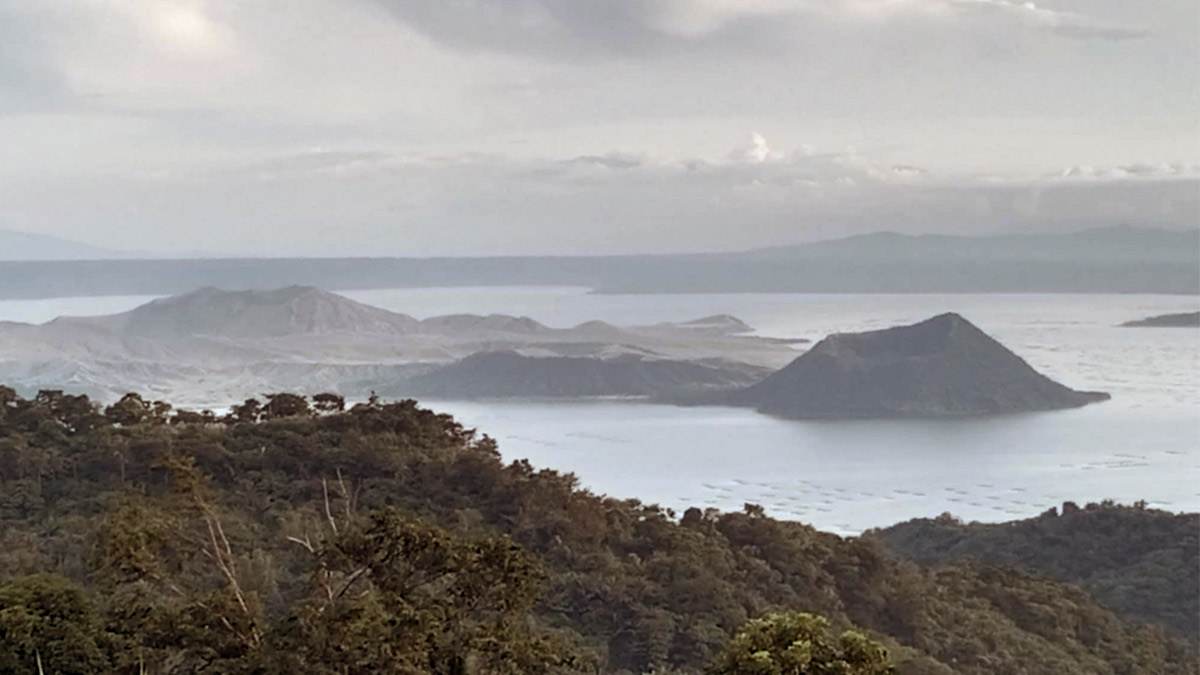Phivolcs detects 11 tremors in Taal Volcano – Phivolcs

DECEPTIVELY CALM The Taal Volcano Island, locally known as “Pulo,” is deceptively calm in this photo taken on Oct. 2, 2024, from a viewpoint in Tagaytay City amid its ongoing unrest, which has prompted state volcanologists to warn officials of towns and cities around Taal Lake to prepare for possible escalation of its alert level from 1 to 2. —SHERWIN TAN
LUCENA CITY — Taal Volcano in Batangas province continues to exhibit volcanic activity, with 11 tremors detected over the past 24 hours, the Philippine Institute of Volcanology and Seismology (Phivolcs) reported on Tuesday.
The volcanic tremors, lasting between one and 16 minutes, were noted in Phivolcs’ 8 a.m. bulletin.
This follows six volcanic earthquakes and five tremors recorded on Monday, as well as five tremors reported each on Sunday and Saturday.
READ: Taal Volcano update: 26 earthquakes logged in past 24 hours
Phivolcs explained that volcanic earthquakes originate from active volcanoes and are characterized by specific patterns, such as their “mode of arrivals, periods, and amplitudes.”
Volcanic tremors, meanwhile, are continuous seismic signals with either regular or irregular wave patterns and low frequencies.
READ: Phivolcs alerts still up over Taal, Kanlaon volcanoes
Taal Volcano experienced a minor phreatomagmatic eruption on Dec. 3, lasting four minutes, further indicating ongoing activity.
It remains under Alert Level 1, indicating abnormal activity. Phivolcs emphasized that this alert level does not signify the cessation of unrest or the threat of eruptive activity.
“At Alert Level 1, sudden steam-driven or phreatic or minor phreatomagmatic eruptions, volcanic earthquakes, minor ashfall, and lethal accumulations or expulsions of volcanic gas can occur and threaten areas within the Taal Volcano Island (TVI),” the Phivolcs said in an advisory on Dec. 3.
Phivolcs recorded a weak emission of 1,706 metric tons of sulfur dioxide (SO₂) from Taal’s main crater. The SO₂ emissions rose to about 400 meters before drifting southwest.
No upwelling of hot volcanic fluids was observed in the Main Crater Lake, locally known as Pulo, which lies at the center of Taal Lake. Additionally, no “vog” (volcanic smog) was reported during the latest observation period.
Phivolcs reminded the public that entry to Taal Volcano Island, boating activities on Taal Lake, and the flying of aircraft near the volcano remain strictly prohibited.
The agency continues to monitor the volcano and urges residents and local authorities to remain vigilant for possible hazards, including steam-driven eruptions, gas emissions, and seismic activity.
Disclaimer: The comments uploaded on this site do not necessarily represent or reflect the views of management and owner of Cebudailynews. We reserve the right to exclude comments that we deem to be inconsistent with our editorial standards.
